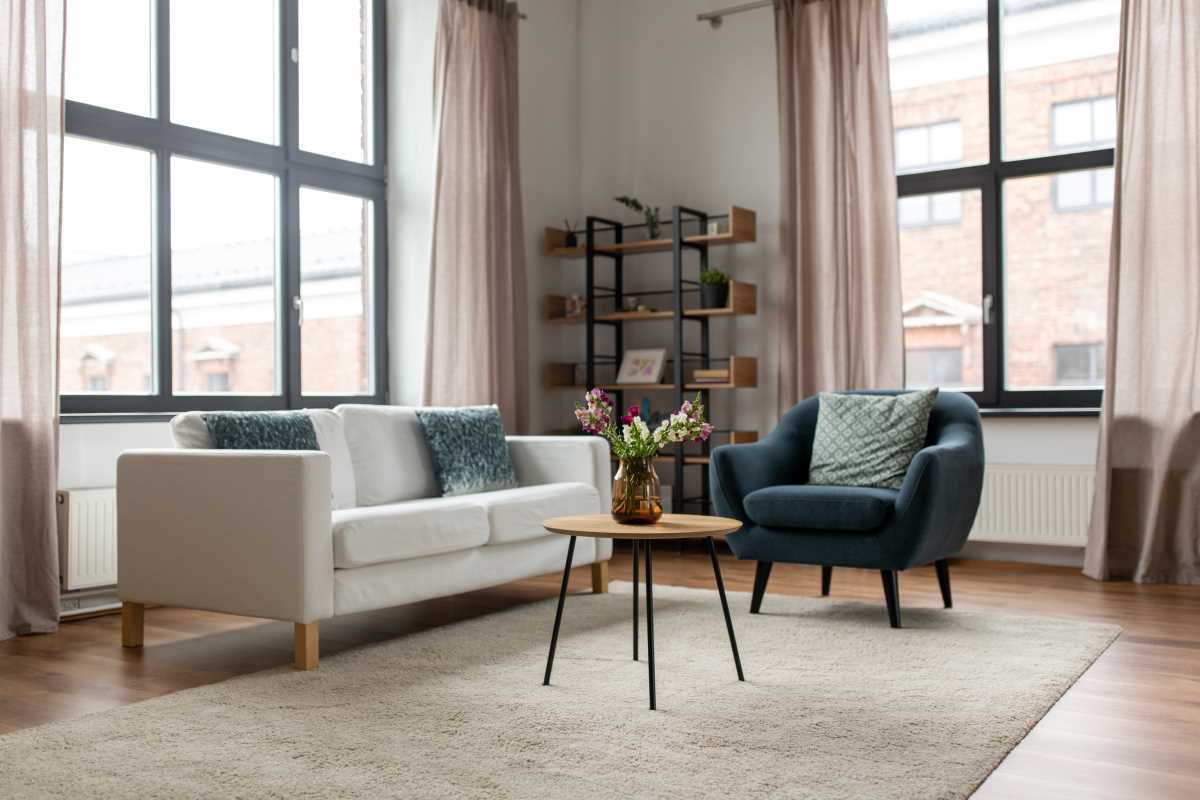Creating a healthy living environment is one of the best things you can do for your overall well-being. The spaces we inhabit have a significant impact on our physical, emotional, and mental health. Whether it's the air we breathe, the way we organize our homes or the materials we surround ourselves with, every detail contributes to the quality of our living environment. Here’s a comprehensive guide to creating a healthy living environment in your home, with practical tips to help you get started.
1. Improve Indoor Air Quality
One of the most important factors in maintaining a healthy home is the quality of the air you breathe. Poor indoor air quality can cause respiratory problems, allergies, and long-term health issues. Here are ways to improve the air quality in your home:
- Ventilation: Ensure proper ventilation in every room. Open windows regularly to let in fresh air and prevent the buildup of pollutants. Installing exhaust fans in kitchens and bathrooms can help reduce moisture, which can lead to mold growth.
- Air Purifiers: Consider investing in an air purifier, especially if you live in a city with high pollution or if someone in your home suffers from allergies. Air purifiers can help remove allergens, dust, and pollutants from the air.
- Houseplants: Some houseplants, such as spider plants, snake plants, and peace lilies, can help purify the air by absorbing toxins. They not only add a touch of greenery but also improve the air quality naturally.
- Limit Synthetic Fragrances: Many air fresheners, candles, and cleaning products contain volatile organic compounds (VOCs) that can negatively impact indoor air quality. Opt for natural, fragrance-free cleaning products and essential oils for scenting your space.
2. Declutter and Organize
Clutter can create feelings of stress and anxiety, making it harder to relax and unwind. An organized, tidy space can contribute to a more peaceful, stress-free environment.
- Decluttering Tips: Go room by room, removing items you no longer use or need. You can donate or recycle old items instead of letting them accumulate.
- Storage Solutions: Invest in functional storage solutions, such as shelving units, baskets, and bins, to keep your space organized. Store seasonal items or things you don’t use often in closets or under the bed to free up space.
- Create a Cleaning Routine: Maintaining a clean and clutter-free home requires regular upkeep. Establish a cleaning schedule that works for you, whether it’s weekly deep cleaning or daily tidying sessions. A clean home can improve mood and create a more inviting atmosphere.
3. Incorporate Natural Elements
Nature has a calming and restorative effect, and incorporating natural elements into your home can help create a healthier living environment.
- Natural Light: Maximize the amount of natural light in your home. Sunlight has been shown to improve mood and regulate circadian rhythms, which affect your sleep cycle. Keep curtains open during the day and arrange furniture to make the most of the sunlight coming in.
- Wood and Stone: Incorporate materials like wood, stone, or bamboo into your home décor. These natural elements bring warmth and texture to your space, creating a more serene and earthy environment.
- Indoor Plants: In addition to improving air quality, houseplants can create a calming atmosphere and bring a touch of nature indoors. Choose low-maintenance plants that suit your lifestyle and the lighting conditions of your home.
4. Reduce Exposure to Toxins
Many everyday household items and products can contain harmful chemicals that contribute to poor health. Reducing your exposure to these toxins is an essential step in creating a healthy living environment.
- Non-Toxic Cleaning Products: Many commercial cleaning products contain harsh chemicals that can irritate your skin, eyes, and respiratory system. Choose natural or non-toxic cleaning products made from simple ingredients like vinegar, baking soda, and essential oils.
- Furniture and Paint: Be mindful of the materials used in your furniture and home décor. Many furniture items, particularly those made from particleboard, can release formaldehyde and other harmful chemicals. Opt for solid wood or eco-friendly furniture whenever possible. When painting your walls, choose low-VOC or zero-VOC paints to reduce indoor air pollution.
- Water Quality: Ensure the water you drink and use in your home is clean and safe. Consider using a water filter to remove contaminants like chlorine, lead, or other impurities from your tap water.
5. Promote Physical Activity and Movement
A healthy home should support physical activity, encouraging you to move and stay active throughout the day.
- Create Space for Exercise: Dedicate a small area in your home for exercise, whether it’s for yoga, stretching, or using workout equipment. Even if space is limited, a yoga mat or a few hand weights can go a long way in keeping you active.
- Active Furniture: If possible, incorporate furniture that encourages movement, such as standing desks or ergonomic chairs. These can help you avoid sitting for long periods, which can negatively impact your health.
- Encourage Outdoor Activity: If you have outdoor space, make it inviting for physical activity. Whether it’s gardening, setting up a space for outdoor workouts, or simply creating a cozy nook for fresh air, an outdoor area can provide an escape and encourage movement.
6. Create a Sleep-Friendly Environment
Sleep is essential for good health, and the environment you sleep in can have a significant impact on the quality of your rest. To promote better sleep, focus on creating a relaxing and peaceful bedroom.
- Choose Comfortable Bedding: Invest in a quality mattress and pillows that provide proper support. Choose breathable, natural fabrics for your sheets and bedding to promote comfort and regulate body temperature.
- Reduce Noise and Light: Noise and light can disrupt sleep patterns. Use blackout curtains to block out light and consider using a white noise machine or earplugs if external noises are keeping you awake.
- Technology-Free Zone: Keep electronic devices out of the bedroom, or at least limit their use before bedtime. The blue light from screens can interfere with your ability to fall asleep, so create a relaxing pre-sleep routine that doesn’t involve your phone or computer.
7. Foster Emotional and Mental Well-Being
Your home should be a sanctuary for your mental and emotional health. Creating spaces that promote relaxation and mindfulness is essential for reducing stress and promoting well-being.
- Mindful Spaces: Designate a corner or room in your home for relaxation, meditation, or mindfulness activities. This space can be simple—a comfortable chair, a cozy rug, or a meditation cushion can make all the difference in encouraging you to take time for yourself.
- Soothing Colors: The colors in your home can affect your mood. Choose calming colors like blues, greens, or soft neutrals for rooms where you want to feel relaxed, such as the bedroom or living room. Brighter colors can be stimulating, so consider using them in areas where you need energy, such as the kitchen or home office.
- Artwork and Décor: Surround yourself with art or décor that brings you joy and inspires positive emotions. Photos of loved ones, meaningful artwork, or cherished mementos can contribute to a feeling of happiness and contentment in your home.
8. Encourage Social Connection
A healthy living environment also supports social well-being. A home that fosters connection and togetherness with loved ones can contribute to emotional health and a sense of belonging.
- Create Inviting Spaces: Design communal areas where family members or friends can gather comfortably. A cozy living room, a dining area that encourages shared meals, or an outdoor space for hosting can all promote connection and communication.
- Unplug and Be Present: Encourage time together without the distractions of technology. Set up spaces that invite conversation and connection, such as a family game night area or a reading nook where you can share books and discussions with others.
Final Thoughts
Creating a healthy living environment goes beyond keeping your home clean and tidy—it involves fostering a space that promotes physical, emotional, and mental well-being. By focusing on improving air quality, reducing toxins, staying organized, incorporating natural elements, and creating spaces for relaxation and social connection, you can transform your home into a sanctuary for health and happiness. Small, intentional changes can make a big difference in your daily life, helping you feel more energized, peaceful, and balanced.
 (Image via
(Image via





